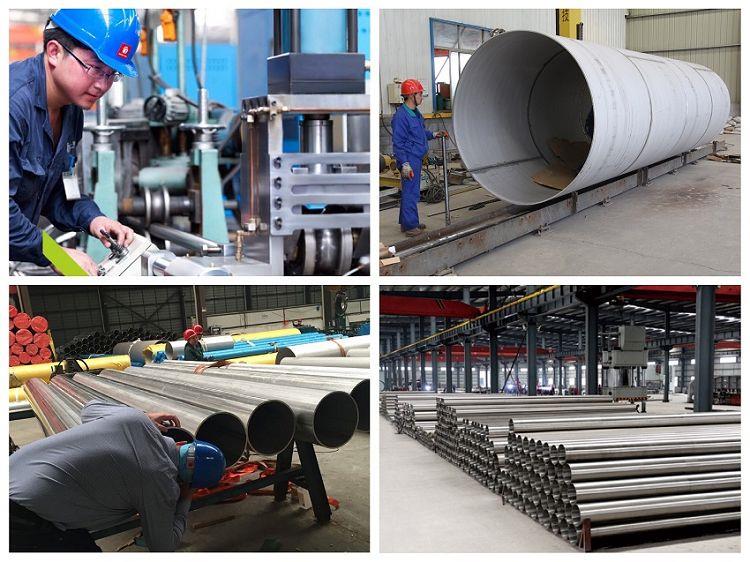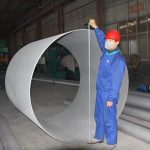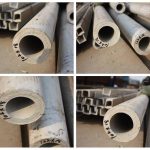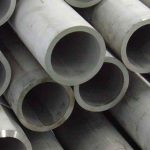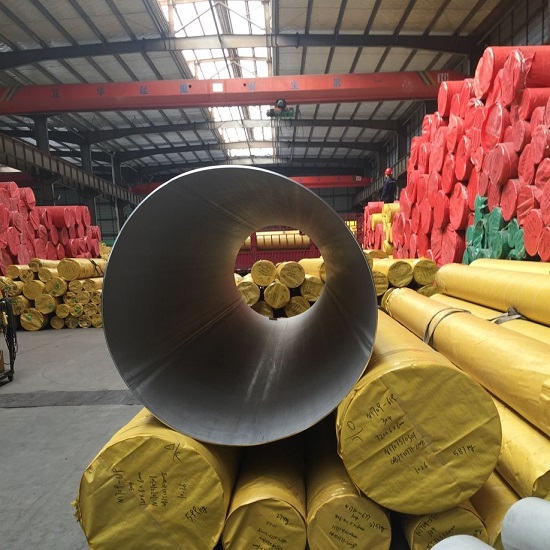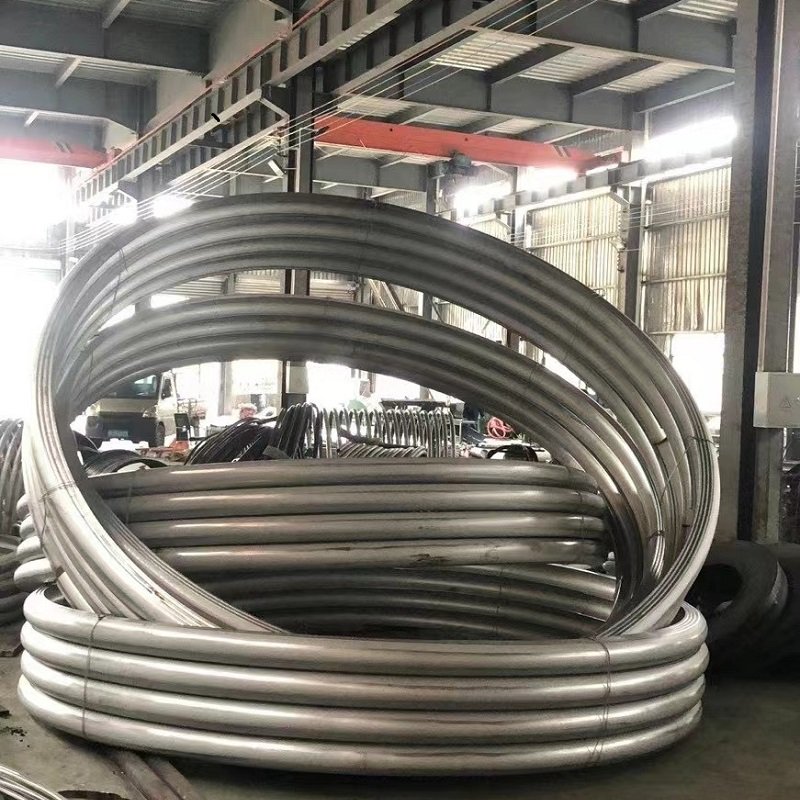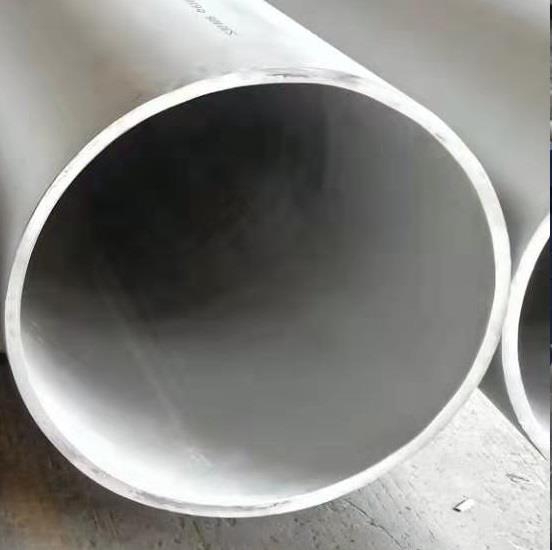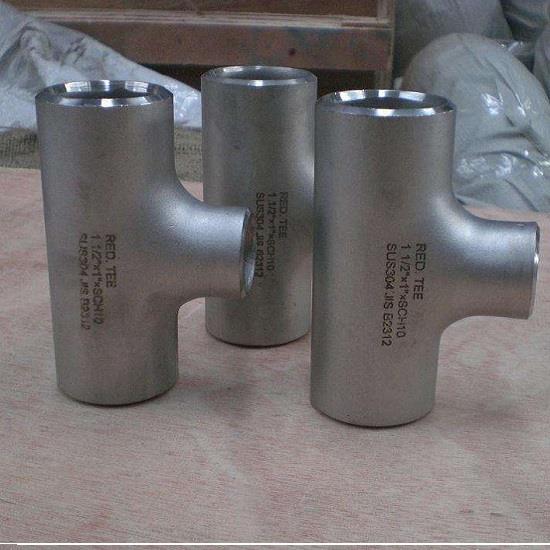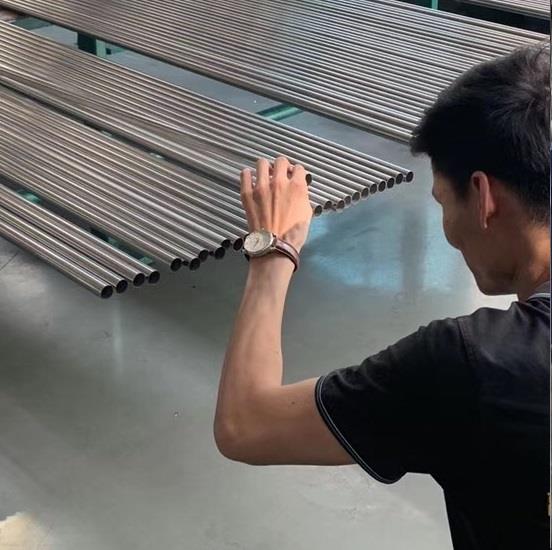Hastelloy C-276,
UNS N10276,
or C276 for short,
is the most common nickel-based corrosion-resistant alloy suitable for various chemical industries containing
oxidizing and reducing media. The high molybdenum and chromium content makes the alloy resistant to chlorine Ion
corrosion,
tungsten element further improves corrosion resistance.
Hastelloy C-276 is one of the only materials
that are resistant to corrosion by wet chlorine gas,
hypochlorite,
and chlorine dioxide solutions. It has significant effects on high-concentration chloride salt solutions such as
ferric chloride and copper chloride. Corrosion resistance.
Hastelloy
C-276 has nine major precautions in welding,
"
Summary is as follows:
1.
Cleaning before welding
Due to dirt and oxides adhering to the surface of
Hastelloy,
the welding area must be cleaned before welding. The cleaning method can be mechanical cleaning,
that is,
the welding area is polished with an angle grinder until the metallic luster is exposed. The cleaning width
should be more than 100mm to ensure that impurities do not enter the welding area.
2.
Welding method
Welding is generally carried out by DC direct connection method.
When DC direct connection,
the tungsten level temperature is low,
the allowable current is large,
the tungsten level loss is small,
the tungsten level end is polished at 30¡ã,
and the head is slightly polished out of the plane.
3.
Gas protection
Hastelloy C-276 must take measures to minimize the corrosion
resistance of the weld and heat affected zone,
such as tungsten gas shielded welding (GTAW),
metal electrode gas shielded welding (GMAW),
submerged arc welding or some other Welding methods that minimize the corrosion resistance of welds and
heat-affected zones.
Consider the obvious protection effect of argon gas: good protection,
concentrated heat,
good weld quality,
small heat affected zone,
small deformation of weldment,
so that the corrosion resistance of weld and heat affected zone is reduced to a minimum.
4.
Welding groove
Welding grooves are preferably processed by mechanical processing,
preferably cold processing,
to ensure that the shape,
size and roughness of the processed surface meet the requirements of the drawing or welding process regulations.
The machining of the groove before welding will cause work hardening,
so it is necessary to grind the machined groove before welding. Welding grooves should not have defects such as
delamination,
folding,
cracking,
and tearing.
Weld the groove and the metal surface within 50mm width on both sides to remove the
oxidation color,
and clean with oxide-free solvents such as ethanol,
acetone or propanol to remove contaminants such as grease,
moisture,
chalk marks,
etc. Sometimes lint-free skin or cellulose sponge. "
Special Steel 100 Seconds"
reminds that useless welding consumables,
harmful substances on workers'
unclean clothes and shoes should be prevented from contacting the workpiece to avoid contamination of the
workpiece.
5.
Selection of welding materials
Ronsco recommends: use ERNiCrMo-4 welding wire,
and use ENiCrMo-4 as the electrode. This welding wire has excellent corrosion resistance and process
performance. Its chemical composition is similar to the base material and the manganese content is higher than
the base material. It can improve crack resistance and control porosity during welding. Especially ultra-low
carbon poses a risk of preventing intergranular corrosion.
6.
Preheating
and interlayer temperature:
In
the room temperature environment,
the Hastelloy welding generally does not require preheating. Only when the temperature in the air is below
zero degrees or when moisture accumulates,
the base material must be heated,
but the heating temperature only needs to reach 30-40 ¡æ.
During
the welding process,
the weld metal will form a Fe-Cr metal compound at a high temperature (375-875¡ãC) for a long time,
that is,
the ¦Ò phase,
the performance of the ¦Ò phase is extremely hard and brittle,
and is distributed at the grain boundary. Cause the weld metal'
s impact toughness to decrease and become brittle.
When
using multi-layer welding,
the temperature between layers must be lower than 90 ¡æ,
the purpose is to prevent 375-875 ¡æ too long,
causing sigma phase embrittlement.
7.
Precautions
during welding
In
order to reduce the welding heat input,
try to select a small welding current and use the fast welding method for welding. In addition,
because the Hastelloy is prone to cracking at the arc ending position,
the arc pit must be filled when the arc is closed. Before the arc welding,
the previous arc pit must be polished,
and then cleaned with a soft brush before proceeding. Subsequent welding. These two treatments can suppress
the occurrence of hot cracks.
The
welded joints are prone to intergranular corrosion. Including intergranular corrosion of the weld,
"
knife etching"
in the overheated area close to the fusion line,
and intergranular corrosion of the sensitization temperature in the heat affected zone.
8.
Post-weld
heat treatment:
However,
in very harsh environments,
C-276 materials and welded parts should be solution heat treated to obtain the best corrosion
resistance.
Hastelloy
C-276 alloy material solution heat treatment,
"
special steel 100 seconds"
is considered to include two processes: (1) heating at 1040 ¡æ~1150 ¡æ;
(2) rapid cooling to black state (400 ¡æ within two minutes Left and right),
the material treated in this way has good corrosion resistance. Therefore,
stress-relieving heat treatment of Hastelloy C-276 alloy is ineffective. Before the heat treatment,
oil stains on the surface of the alloy should be cleaned of any dirt that may generate carbon during the
heat treatment.
Hastelloy
C-276 alloy surface will produce oxides during welding or heat treatment,
which reduces the Cr content in the alloy and affects the corrosion resistance,
so it must be cleaned. You can use a stainless steel wire brush or grinding wheel,
then immerse in a mixture of nitric acid and hydrofluoric acid in the appropriate ratio to pickle,
and finally rinse with clean water.
9.
Precautions
for welding tools:
The
processing tools should be special cleaning tools for nickel alloys. These tools should be stored separately
and clearly marked to prevent confusion with other tools.
Care
should be taken to prevent the workpiece from coming into contact with low-melting metals to prevent the
formation of brittleness of unstable metals due to the increase of carbon or sulfur. The use of temperature
measuring chalk,
ink,
and ointment should also be restricted during the manufacturing process.
The
grinding wheel used for grinding the workpiece should be free of iron ions,
and the adhesive should not be organic resin.
The
positioning of equipment under pressure before welding shall be performed using the same process as the
qualified formal welding,
and the positioning welding seam shall be melted into the permanent welding seam at the end. Welded parts
are not allowed to be forcedly assembled to cause local hardening of the welded parts.

